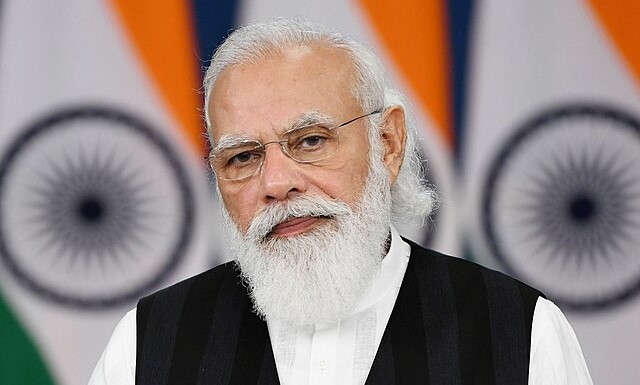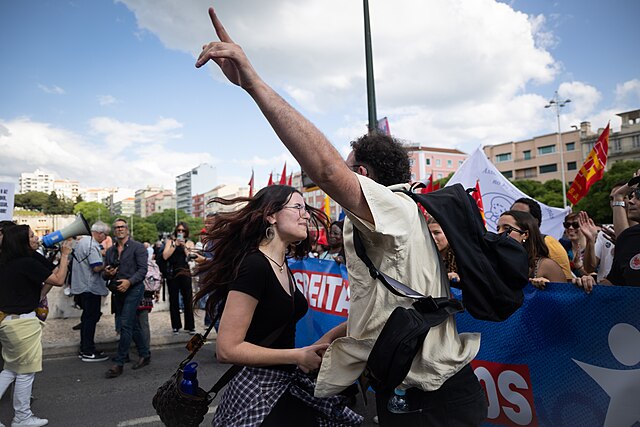India’s general elections began in April this year. These elections are the largest electoral exercise in the world, where 800 million people will vote and decide the fate of a fifth of the world’s population for the next five years. Over the last 77 years, with the exception of the Emergency years of 1975-77, independent India has retained its reputation for being a democratic republic, conducting free and fair elections at regular intervals, both at federal and provincial levels. India’s diverse nature has been reflected by different political parties and coalitions coming to power. Since 2014, however, when the Bharatiya Janata Party (BJP) came into power under the leadership of Narendra Modi, the political milieu in India has changed radically. Under Modi’s rule as Prime Minister, the BJP has tried to establish single-party hegemony at the federal and provincial level using every possible trick in the book. These elections are crucial because they may well be the end of India as we know it.
In order to understand why the BJP are such a big threat, it is necessary to dig into their provenance and look at the rise of Modi in particular. The BJP are the electoral wing of the Rashtriya Swayamsevak Sangh (RSS) – a Hindu nationalist organisation founded in 1925, with the explicit objective of establishing a Hindu state in South Asia. The early ideologues of the RSS were inspired by the rise of fascism in interwar Europe, and were instrumental in inventing the concept of Hindutva. Nathuram Godse—the man who assassinated Mahatma Gandhi—was a lifelong member of the RSS (although they unsuccessfully tried to distance themselves from him). After Gandhi’s assassination, the RSS was banned for a short while by the Government of India. This ban was only lifted after they agreed not to participate in electoral politics. The RSS circumvented these restrictions by creating an organisation called the Jana Sangh, which, over the course of time and various organizational experiments, metamorphosed into today’s BJP.
The BJP’s first stint in power at the federal level was between 1998 and 2004, when they formed a coalition government. In 2002, Narendra Modi was the Chief Minister of the western Indian state of Gujarat. Under his tenure, Gujarat witnessed a pogrom against Muslim minorities, with with as many 2,000 (mostly Muslim) deaths. Several accusations were levelled against him and his government, for being an active participant in the massacre of Muslims. His closest ally, Amit Shah—the present Home Minister of India, and Gujarat’s Minister of State in 2002—had been charged with organising the killing of Sohrabuddin Sheikh, a man linked to the murder of Haren Pandya, a rival to Modi from within the BJP. During the court proceedings, several key witnesses turned hostile, judges recused themselves, and one of the judges died under mysterious circumstances. Eventually, the case ended up being dismissed. Together, Modi and Shah are a formidable team that rely on fear and intimidation tactics to have their way with the legal and political system.
After coming to power at the federal level, Modi’s BJP government had adopted two objectives—the complete liberalization of the economy, and the transformation of India into a Hindu nation-state. The trend towards economic liberalization is not new, and has been steadily sharpening since 1991, when the Indian economy was opened up. Broadly, government spending per capita on education and healthcare has gone down, while the share of the private sector has gone up, thus enabling the commodification of basic social welfare. The BJP has also loosened labour laws, taking away the basic rights of workers by increasing working hours, contractualizing permanent jobs, and revoking the right to protest. Agricultural laws have been changed, in order to pave the path for corporations to enter into agricultural markets; this led to massive farmers’ protests in 2021. The BJP has also brought reformed mining laws, making it easier for corporations to expropriate the country’s natural resources, often leading to the displacement of indigenous communities who have lived in mineral-rich regions for thousands of years.
These changes have particularly benefited one mega-corporation—the Adani Group, a longstanding friend and donor to the BJP. Gautam Adani, once the world’s second-wealthiest man, has benefited not only from India’s domestic policy, but also its foreign policy, as it expands its activities from Australia to Israel. This is not new: crony capitalism has been entrenched in the Indian economy for decades. The biggest trick that the BJP have pulled, however, has been to create a class of financial instruments called electoral bonds, that allow corporations to make anonymous donations to political parties. Buyers of these instruments remain anonymous to the general public, but not to the party that they donated to, allowing them to receive favorable contracts from the state. A recent Supreme Court judgment made these bonds illegal, and forced the State Bank of India to reveal the names of donors. Analyses of the data reveal that the BJP received close to 50% of all the money under this scheme, to the tune of $700 million. A list of donors reveals a number of corporations, many of whom would have wound up benefiting from receiving preferential government contracts.
Ideologically, what is unique to the BJP is the hegemonic control over the Hindu nation-building narrative that it has managed to achieve, through a combination of intimidation and propaganda. What this means is that if you dare to criticise the BJP, you become a target for attack through the various channels that they now control. Since 2014, India has witnessed an unprecedented attack on reason, protest, and any sort of activity that the government considers a threat to its interests. The scale of this attack is so vast that it is difficult to summarize in a single article. But if we zoom out a bit, a clear pattern emerges. The BJP has mobilized an army of propaganda warriors/internet trolls, whose job is to spread mis- and disinformation. This happens on social media and through tools like WhatsApp, birthing the satirical phrase, “WhatsApp University”. The electronic media, particularly English and Hindi television channels and newspapers, are largely owned either by Adani or other corporations close to the BJP. These media sources indulge in unabashed praise of the government, and shut down any kind of dissent, using terms like “anti-national” or “terrorist”, effectively rendering this government beyond critique. The BJP’s propaganda cell (the IT cell, as it is popularly known) is so strong, that it has even been successful in creating large scale communal violence across India. In addition, the BJP has successfully birthed a sophisticated group of right-wing “intellectuals”, who justify all the atrocities, violence, and attacks on civil liberties, under the garb of national pride, and spin it as creating a new decolonial history of India.
More recently, the BJP has seen scrutiny for instrumentalising institutions like the Income Tax Department, the Enforcement Directorate, and the Central Bureau of Investigation, using them to attack political rivals. Journalists and activists who have been vocal against the government have faced raids in their homes, or arrests under draconian security laws, and have seen imprisonment without trial. Laws like the Sedition Law, the National Security Act, and the Unlawful Activities (Prevention) Act have all been strengthened, so that one can be incarcerated for years without bail, and presumed to be guilty until they prove their innocence. Universities are not only facing discursive violence, through changes in academic practices and the outright banning of any anti-government discussions, but also actual violence, where the police and Hindu nationalist mobs have physically assaulted protesting students and teachers.
The biggest challenge for the BJP to turn India into a Hindu state is the country’s more than 200 million Muslim citizens. In this regard, their tactics have also been twofold—breaking the morale of the community, and actively turning the Muslims of India into a second-class citizenry. In January 2024, Narendra Modi inaugurated a grand temple at the exact site of the Babri Masjid—a 400 year old mosque, destroyed in 1992 by a Hindu nationalist mob under the leadership of LK Advani, a prominent BJP politician. This is not an exceptional event. One of the slogans that the BJP use says that the Babri demolition was “just the beginning”, and that other mosques in Kashi and Mathura are next.
While the mosque demolitions act as a symbolic reminder to Muslims about their secondary status, in recent years, Muslims have also been lynched by so-called cow vigilantes, under the pretext that they were consuming or carrying beef. Muslim localities and houses have been demolished, solely because their residents protested against the government. Inter-faith marriages between Hindus and Muslims increasingly require special permissions from judges, due to the moral panic around “*Love Jihad”*. On multiple occasions, BJP leaders (including ministers) have called for an economic boycott of Muslims. The resemblance to 1930s Germany is stark, but probably unsurprising, given the party’s provenance. In order to degrade the Muslim population to a second-class citizenry, the Modi government recently passed a law (the Citizenship Amendment Act, 2019) and intends to use it to initiate a countrywide citizenship register. This implementation was hindered by mass protests and the pandemic. However, the ulterior motive behind the law is to strip as many Muslims as possible of citizenship, and then declare them foreign nationals. This process has already been initiated in the north-eastern state of Assam, where 1.9 million people have presently been declared stateless.
Under these circumstances, the BJP’s defeat in the next elections is of utmost importance for the future of India as a democratic state. Unfortunately, the situation does not look promising; the opposition is neither strong nor unified enough to combat the colossal financial and organizational strength of the BJP. Moreover, the Election Commission of India has been losing its credibility in recent years, as it has favoured the BJP over other political parties. A free and fair election is supposed to be an impartial process that reveals the will of the general public. But this process itself is at stake, as the BJP relies on coercion, money, intimidation and propaganda. They have repeatedly bought out winning opposition candidates, or threatened them to get them to join the BJP when they have been short of a majority. Thus, there is no guarantee that BJP will lose even if there is a free and fair election. The judiciary, which has remained independent and a check on the government’s arbitrary practices, has also lost its credibility, as Supreme Court judges that have favoured the BJP agenda have been given ministerial positions upon retirement.
All signs point towards the BJP having no intention to leave office. With plans for gerrymandering, and changes to how many representatives each federal state will have at the national level, it appears that a few states from the Hindi-speaking parts of India (a bastion of support for the BJP) shall have larger electoral weight going forward. At this point, India will not only face threats against its democracy, but could fall into an actual political crisis, which might not be resolvable through elections or other democratic processes.
While we cannot predict the future, there is reason believe that 2024 will go down in history as landmark elections in India: perhaps even the last.




